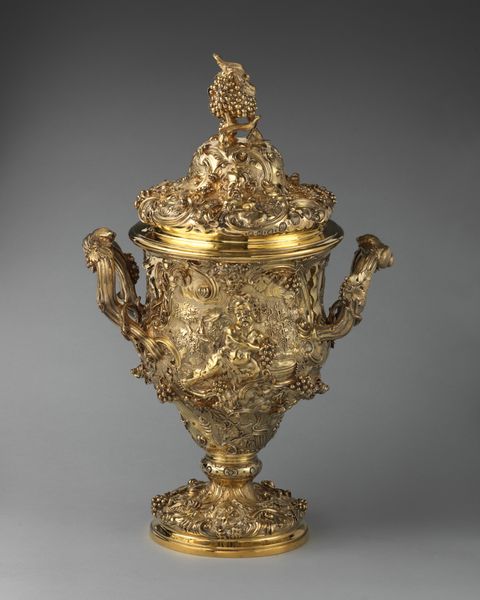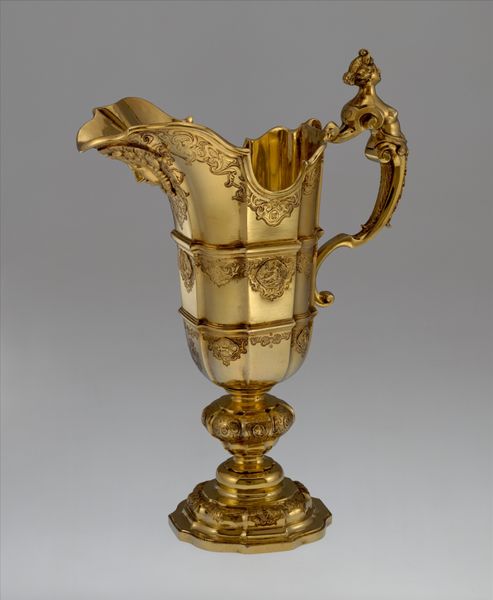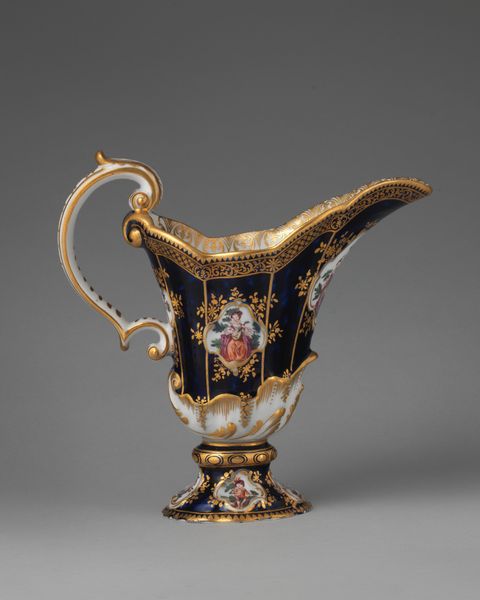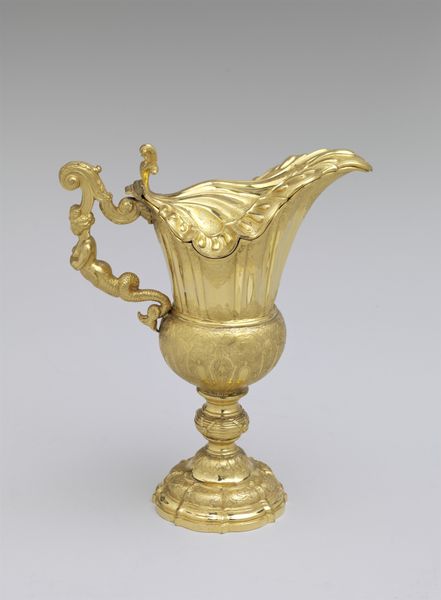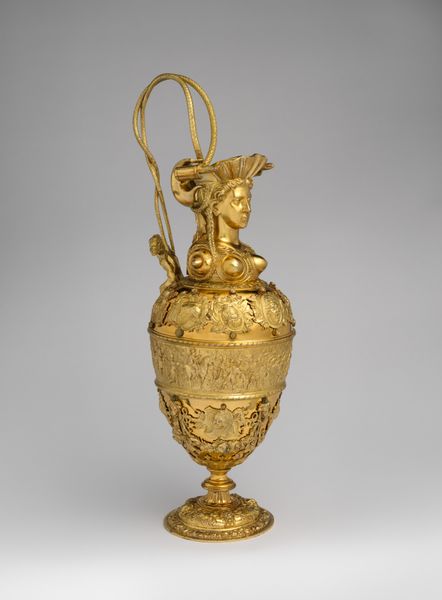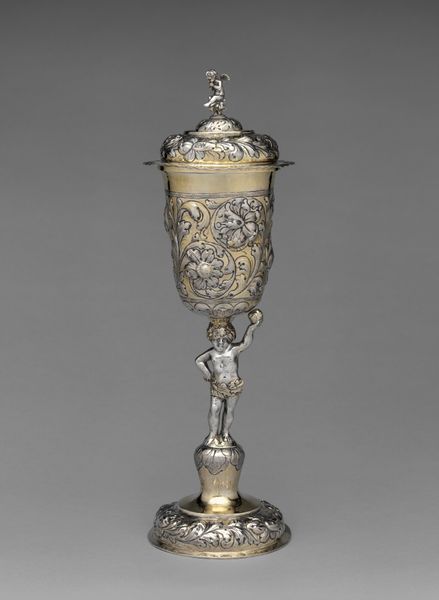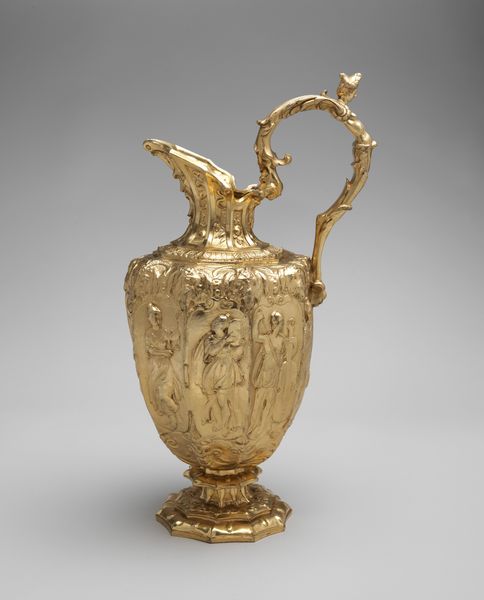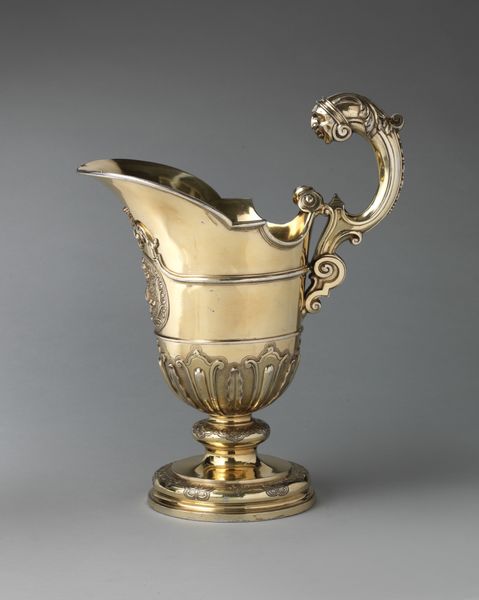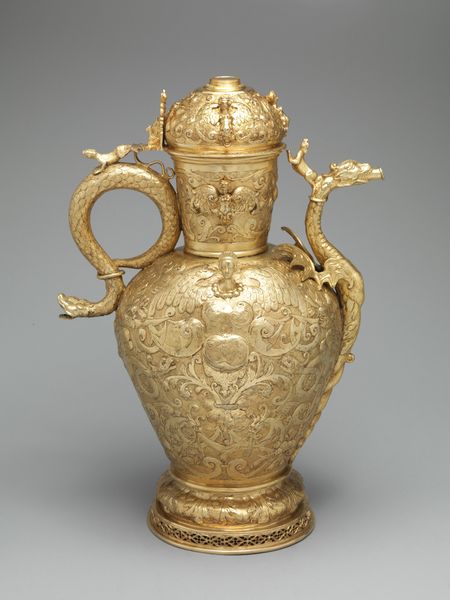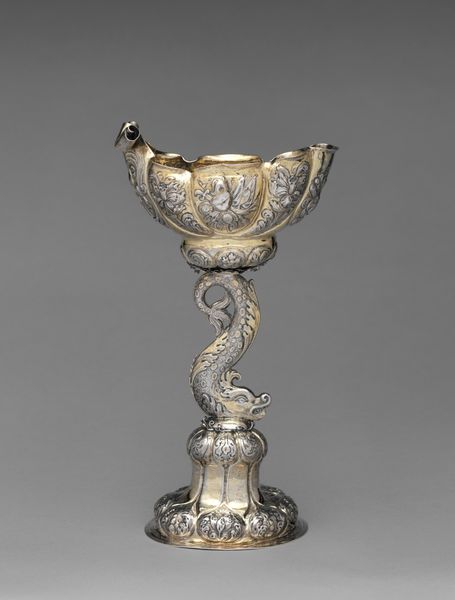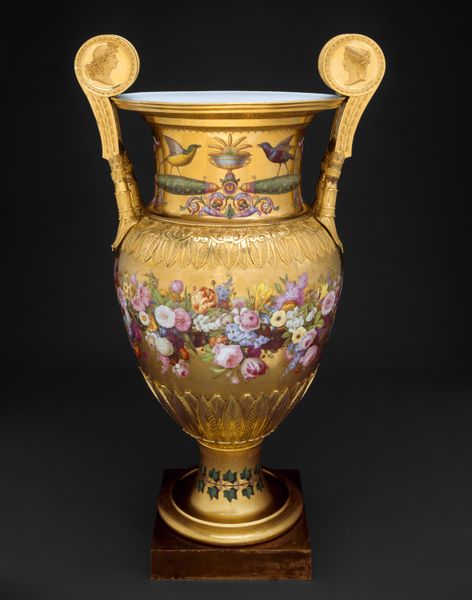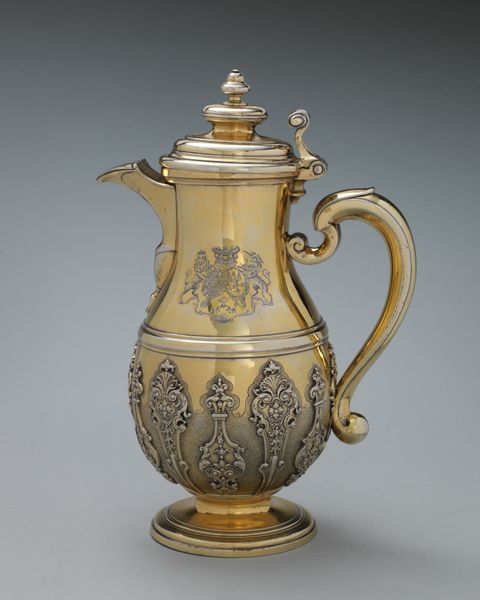
metal, gold, glass, sculpture
#
metal
#
asian-art
#
gold
#
glass
#
sculpture
#
islamic-art
#
decorative-art
Dimensions: Height: 9 7/8 in. (25.1 cm)
Copyright: Public Domain
Editor: Here we have a truly ornate Ewer, crafted by Ferdinand Eusebio Miseroni sometime between 1675 and 1815. It's a dazzling mix of gold, glass, and other metals. It feels…almost excessive in its decoration. What jumps out at you when you look at this piece? Curator: I'm immediately drawn to the cross-cultural dialogues embedded within its creation. A European artist interpreting Asian dragon motifs using precious materials…it begs the question, what did the dragon *mean* in its original cultural context versus what it represents within this decorative object made for a European elite? Editor: So it’s not just about aesthetics, but also about cultural exchange and perhaps even appropriation? Curator: Exactly. Who had access to these objects and narratives? What did it mean to own and display such an extravagant piece, pulling symbols from a culture then largely unknown? Were these dragons seen as powerful figures, mystical beings, or simply exotic decorations to be consumed? Editor: That adds a completely new layer to how I see it. It’s no longer just a beautiful object, but also a statement of power and a reflection of colonial attitudes. Curator: Indeed. Think about the materials themselves. Gold and glass signify wealth and status, but also trade routes and access to resources. The piece becomes a material manifestation of complex global power dynamics. And where is this ewer now? Displayed within the safe and neutral space of a museum, far removed from its contested history. Editor: It's interesting to think of an object holding so much complexity. I guess I saw opulence but missed the critical subtext about power and culture. Thanks! Curator: It's about looking beyond the surface, isn't it? Seeing these objects as participants in an ongoing global conversation about power, representation, and history.
Comments
No comments
Be the first to comment and join the conversation on the ultimate creative platform.
